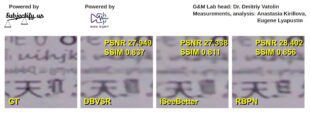I presented a half day seminar for the Greater Wisconsin Chapter of the MCA-I on Thursday, April 9. I wanted to thank all the folks who made that possible and made my stay enjoyable, including Dick Kenitzer, Pam Rucinski, and especially Colleen Parquette.
This presentation was particularly fun because I presented two brand new topics, on distribution options for streaming media, and using streaming media for customer acquisition and retention. It’s wonderful to synthesize thoughts on a new topic and then present before a knowledgeable and engaged group of professionals and get their input.
Some of the attendees requested that I post the full slides from the presentation to supplement the printed handouts that the MCA-I supplied at the seminar, so I’m doing so. For those who might wander by by chance, I also present the agenda for each hour of the presentation in the main article.
Hour 1: Producing for Streaming
1. Choosing a camcorder
2. Finding streaming – friendly backgrounds
3. Flat or threepoint
lighting – what the market says
4. Production workflows CS4/Final Cut Studio
(The first hour is for streaming specific training, not general videography. For example, if you’re shooting for TV, you can use either progressive or interlaced equipment. If shooting for streaming, progressive makes a huge quality difference for the better. Similarly, the workflow sections are solely for streaming.)
Hour 2: Choosing Output Parameters
5. Codec/rez/data rate
6. Encoding with WMV9/VP6/H.264
7. Choosing an encoding tool
Hour 3: Delivering Your Streaming Video
8. Overview of options (progressive, streaming, CDN, social media sites) with
positives and negatives
9. Exploring YouTube’s delivery options
10. Understanding Facebook’s option
11. Delivering via Vimeo, Blip.tv, smugmug and other sites
Hour 4: Using Video on the Web
12. Overview – how video is being used for marketing and customer retention
13. Successful case studies
14. Anatomy of a successful web video
15. What you should be doing to market your practice/company
 Streaming Learning Center Where Streaming Professionals Learn to Excel
Streaming Learning Center Where Streaming Professionals Learn to Excel








